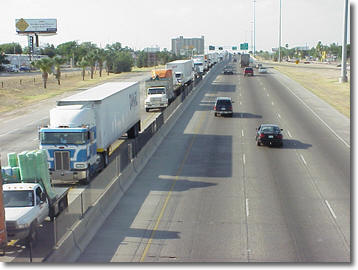Data on Dangerous TXU-Luminant Pollution Underscores Need for Strengthened Environmental Safeguards
The Sierra Club released new reports indicating that three large, North East Texas coal-fired power plants owned by Luminant, formerly TXU, are single-handedly causing violations of federal air quality standards. The three East Texas coal plants addressed in the reports — Big Brown, located in Freestone County, Monticello, located in Titus County, and Martin Lake, located in Rusk County, have a history of environmental problems. The new reports indicate that sulfur dioxide emissions from the troubled coal plants are causing air pollution in nearby areas that exceeds the federal air quality standard for sulfur dioxide (SO2). The reports come a week after the Environmental Protection Agency (EPA) issued a rule that requires coal-fired power plants in 28 states, including Texas, to cut dangerous SO2 emissions.
“TXU-Luminant’s coal plants have been a problem for public health and the environment for a long time now. Big Brown, Monticello, and Martin Lake top the list of the nation’s worst polluters,” said Neil Carman, Sierra Club’s Clean Air Program Director. “These reports reveal that the TXU-Luminant coal plants’ emissions of dangerous SO2 pollution are more than double the allowable amount of that pollutant.
The new EPA safeguard is designed to protect public health by setting a maximum amount of SO2 considered to be safe for Americans to breathe. The reports by Khanh T. Tran of AMI Environmental, show that the three coal plants are each modeled to emit SO2 pollution at levels that are predicted to far exceed the federal standard – even without taking into account other background sources.
SO2 is linked to asthma, other respiratory illnesses, and heart disease. SO2 is especially harmful to those with existing conditions, such as asthma, and is associated with increased emergency room visits, according to the EPA.
In 2010, TXU-Luminant’s three coal plants emitted the following tonnage of SO2 into the air:
Martin Lake ~76,000 tons of SO2
Big Brown ~63,000 tons of SO2
Monticello ~58,000 tons of SO2
TOTAL in 2010 ~ 197,000 tons of SO2
Ilan Levin, attorney with Environmental Integrity Project, said “Despite lots of promises, TXU-Luminant continues to be the poster child for dirty coal-fired power plants. The levels of dangerous contaminants being put into the air and water from just these three coal plants is staggering.”
Highlights From the Reports:
- Big Brown, Monticello, and Martin Lake are the top three emitters of sulfur dioxide emissions in Texas
- Martin Lake coal plant was modeled to exceed safe limits by over 189%, and the area of exceedances is up to 10 miles away from the coal plant.
- The report’s modeling shows that each coal plant is causing exceedances of sulfur dioxide air quality standards independently, without taking into account other sources of SO2 pollution.
TXU-LUMINANT OPTIONS
“A series of additional EPA environmental safeguards are pending that will require coal plants to install a series of retrofits to meet toughening clean air and water standards. We estimate these retrofits could cost as much as $3.6 billlion for all three of the plants,” said Tom ‘Smitty’ Smith of Public Citizen’s Texas Office. “TXU-Luminant should consider retiring these aging coal plants and replacing them with cleaner energy options such as energy efficiency and renewable energy including geothermal, wind, and solar power. TXU-Luminant has already made some clean energy steps, however they could create many more jobs by transitioning away from dirty coal toward clean energy.”
An earlier report released in March 2011 by the Sierra Club, The Case to Retire Big Brown, Monticello and Martin Lake Coal Plants details financial issues at the North East Texas TXU-Luminant coal plants which are the subject of today’s air modeling reports. The financial report’s author Tom Sanzillo found, “The bottom line investment decision: should $3.6 billion, and possibly more be invested into plants that are nearing the end of their useful life (usually fifty years) in a regional economy that is not conducive to coal plants. Throughout the United States coal plants are being retired because the market in mid and late stage plants are no longer profitable.”
Neil Carman, Clean Air Program Director with the Sierra Club’s Lone Star Chapter summed it up this way, “TXU-Luminant should begin phasing out and retiring the dirtiest coal plants – these plants are public health hazards and that is not acceptable — nor financially viable. TXU-Luminant would do much better to strongly transition to clean energy.”
Read Full Post »






